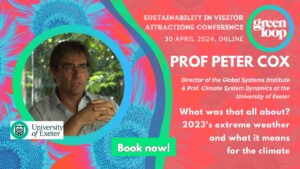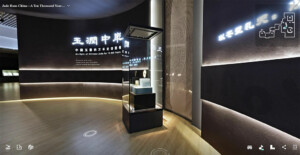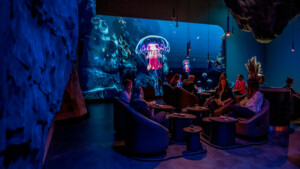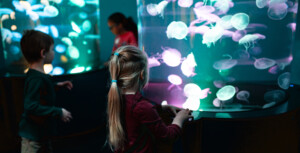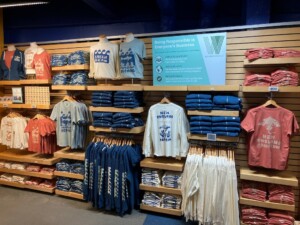Check the mission statement of your local zoo. Go ahead, I’ll wait. Now, I’ll bet you a buck I can name at least one of the key words in that mission: Conservation. (How about a fiver if I can name the rest? Education, Recreation, Research. Am I right? Luckily, I accept PayPal.)

Conservation has been a pillar of zoos and aquariums for decades, and one of the clear zoo messages has consistently been: Conservation starts at home. You can make a difference by making decisions and taking action in whatever means you can’recycling your Campbell’s soup cans and drinking Britta filtered water from a reusable water bottle rather than buying Aquafina (unless you’re at the zoo, then by all means, BUY THAT AQUAFINA!). Surprisingly, though, zoos and aquariums have only recently begun implementing organizational and operational strategies to be green, lagging, it seems, years behind other sectors.
One measure of “greenness’ in the U.S. is LEED (Leadership in Energy and Environmental Design)’a highly touted and perhaps most widely recognized rating system initially developed for human inhabited buildings. Zoos have long used the excuse that LEED standards are not applicable to their situations since zoos are primarily focused on animal inhabited buildings and outdoor spaces. However, LEED has recently been successfully interpreted for zoo settings, and perhaps more importantly, other green standards (like ISO 14000, local municipality and state-wide green guidelines, sustainability metering) have been developed. Today, the combination of an ever-aware public and extended applicability of green practices has forced zoos to begin implementation after years of talking the talk.
However, the major obstacle for sustainability in zoos is the belief that green practices are just too expensive to be practical for the limited budgets and resources of zoos. For example, the amount of energy needed for life support for aquatic species and the amount of water used daily for wash downs and dump & fill pools are simply insurmountable. These obstacles have held for many years, but green practices are now just too commonplace to avoid. Site-wide recycling programs, dedication to reduced paper use, and corn-based flatware and plates have become the first steps for many zoos. The next step is construction-based opportunities like using recycled materials, daylighting, and smart lighting. The public, especially zoo-goers, believe in these strategies, and zoos do benefit from marketing these efforts. As recently as three years ago, most zoos’ websites touted their green dedication listing what amounted to not much more than basic efforts. But in just the last three years, a major shift has occurred.
Institutions are making major investments in green practices, placing the green efforts as a priority over elements that would historically been considered necessities; taking chances on technologies that may or may not work out in the end; investing in practices with longer than reasonable Returns on Investment. Denver Zoo (https://greensource.construction.com/news/2013/05/130531-denver-zoos-elephant-passage-achieves-leed-platinum-certification.asp), Oregon Zoo (https://www.oregonzoo.org/about/sustainability) and California Academy of Sciences (https://www.calacademy.org/newsroom/releases/2011/double_platinum.php) are a few institutions taking these risks. Moreover, the AZA has taken up the effort. 2013 marked the third annual “Green Summit’ where zoos and aquariums meet to discuss efforts. And they released the Zoo & Aquarium Green Guide with suggestions for beginning a sustainability program on site in 2011.(https://www.aza.org/uploadedFiles/Conservation/Commitments_and_Impacts/Green_Practices/The%20Zoo%20and%20Aquarium%20Green%20Guide.pdf)

Unfortunately, aquariums’ challenges are far greater than traditional zoos. But even these are not insurmountable. Today, however, they certainly are lagging behind even zoos. As designers, our role is to guide our clients through the opportunities, letting them know there are things that can easily be done (and in many cases, are already a standard practice of which our clients may not be aware) that will not increase the price of the projects. From there, many options exist including many with quick ROIs as well as many riskier options. But, the biggest thing we can do is to get them to approach green design through a campus-wide lens. Plan for changes, but implement as appropriate. Get the assessments and metering completed so baselines are understood, then work the easy ones first. And as our guests become more and more knowledgeable about sustainability, these practices will become more and more important as we transition from simply talking the talk to truly walking the walk.



